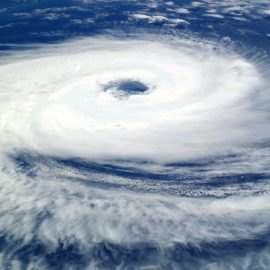
You want to get away from it all so you live on the edges of civilization and it has its problems, especially after a storm like Ida.
Brenda Harris and her husband, Johnny, grew up in the swamps that buffer the pine woods of Tangipahoa Parish from the north shores of lakes Maurepas and Pontchartrain. Now retired, the Harrises lived nearly full-time at their camp of 21 years on South Pass, a quarter-mile-wide stretch of water that connects the two lakes. They liked watching Purple Martins from their porch and gazing across the prairie on a clear day. Sometimes, they’d boat around and chat with neighbors in the tight-knit community as the sun set over the swamp. But Hurricane Ida left the couple’s future at the camp uncertain. The storm brought a 9-foot wall of water and 140 mph winds that wrenched the porch from the house, along with three of its ground-floor walls and part of a dock. It was “total devastation,” Brenda Harris, 71, said.
theadvocate.com
The problem with living on the edge is that you have no public services. No one to pick up trash. You are still out of normal delivery services which might make it hard to get help in fixing up damaged property.
Almost two months have passed since the storm, which people in Tangipahoa Parish regarded as the most destructive since Hurricane Katrina. Yet the couple is only starting to pick up the pieces at their camp in Manchac — a working-class community of fishers, old-timers and weekenders built into a swampy stretch of lakeshore straddling Tangipahoa and St. John the Baptist parishes. “We’re just starting the cleanup process,” Brenda Harris said. “We’re not able to do a whole lot, but we have someone on call. They’re supposed to go next week to get the dock fixed.” Hurricane Ida shrieked into South Louisiana from the gulf of Mexico almost two months ago, on Aug. 29, decimating the power grid from Baton Rouge to New Orleans. Recovery work started the next day. In nearby cities like Hammond and Ponchatoula, power was inching back by early September and trucks began hauling debris to staging areas. That process is more cumbersome in places like Manchac, a community of about 200 camps dotted along the swamp. In the buffer zone for Ida’s path up the I-55 corridor, storm surge and wind picked up whole houses and left pieces of them strewn across the swamp grass. Hauling debris out of the swamp and returning power to the homes left standing are time-consuming ordeals because the area is only accessible by water.
Things might be getting better, 2 months after Ida struck.
A glimmer of good news came last Friday when Entergy workers restored power to 100 camps along North Pass and South Pass, according to Chris Hammons, a customer service worker for the utility company. Camps in the area endured seven weeks since the storm off the grid. With no electricity, residents had only generators to power electric tools for fixing damaged homes. Coupled with the challenge of working without air conditioning, progress has been slow-going, said Kim Coates, a Ponchatoula-area member of the Tangipahoa Parish Council. Entergy expects to restore power to 160 more camps still off the grid between the mouth of the Tangipahoa River and Lee’s Landing by Nov. 15. Another 20 camps north of Lee’s Landing should regain power by Nov. 25, Hammons said. “We have a five-man crew out there with off-road and swamp equipment, and they’re working daily,” Hammons said. “They’re setting poles, picking up wire and setting up new transformers.”
Power may be back on soon but the trash remains.
Even as power returns, debris is still piled up. A mix of matted swamp grass, shredded branches and pieces of pulverized houses lie on the banks and clog small bayous that flow into the lakes. The Galva Canal, a waterway near U.S. 51 on the St. John side of South Pass where many residents dock their boats, remains covered by knotted swamp grass the storm ripped from the ground and blew back into the channel. Debris in inland communities can simply be placed on the roadside. Manchac residents, on the other hand, have to boat theirs out, heave them into a truck bed and then drive them to a drop zone. Coates is trying to work with the Federal Emergency Management Agency to send a barge where residents could pile their debris. But she said there’s no timeline for that to happen. “There’s been a little progress, but not a lot,” she said.
There are more of the off the grid communities around the area.
Fifty miles south of Manchac, the story has been similar in the community of Bayou Segnette, a cluster of 150 camps on the southern boundary of the New Orleans metropolitan area. Like Manchac, homes there are accessible only by boat. Power returned to most houses on the bayou in early October, said Mike Choate, a camp owner known as “Mayor Mike.” But heaps of debris containing everything from remains of collapsed roofs and soggy mattresses to mounds of marsh grass are still stranded on properties isolated in unincorporated Jefferson Parish, Choate said. “There are little islands of trash, just floating around,” he said. “Depends when the tide’s going down. Everything goes out the bayou when the tide’s down. It kind of rotates, up and down, up and down every day.” Choate appealed to Jefferson Parish and the Edward Wisner Donation Trust, which leases land to homeowners in the unincorporated area, for help clearing trash. Jefferson Parish officials and Westwego Mayor Robert Billiot Sr. say the community lies outside their jurisdiction.
A previously posted article on Manchac mentioned that the people ar living on a foundations land.
Wisner Trust land manager Amanda Phillips has likewise spoken with Jefferson Parish officials about finding a way to clear the debris mounds. But the parish is wary of spending money on debris removal that FEMA might not reimburse since the area isn’t technically under their jurisdiction, she explained. “I’m looking at how much it will cost to get someone to come in there and do it on a grant, but it’s going to take a long time,” Phillips said. “It’s not going to happen overnight.” Without help, Choate worries the area will take years to recover. “Everybody’s got power now,” he said. “But we’ve still gotten no help at all with the trash pickup. People are dumping trash into the bayou.”
Getting contractors her is also a problem despite being near to New Orleans.
In Manchac, Osman Crain hasn’t been able to find a contractor to repair damage to his camp on South Pass which includes a ripped-off roof, lost pilings and a pulverized deck. “I’m trying to get the roof back on and dry it in so that I can do repairs inside,” he said. “But it’s just painful getting to that point.” The Harrises are leaning towards rebuilding their house, which lies a little ways east of Crain’s on South Pass. But they realize it won’t happen too quickly. “I think a lot of people will be back,” Brenda Harris said. “It’s just going to take a little while. This is something we haven’t seen before.”
I often think I want to get away from the hustle and bustle of life here but then I think of the problems and just go visit!



